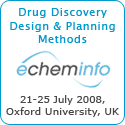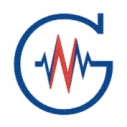 |
| http://server.ccl.net/chemistry/bender/index.shtml |
| CCL Charles F Bender | |
|
|
Remembering Charlie Bender, 1940 - 2007Charlie Bender, my long time boss and friend passed at 10am on October 25, 2007 at Presbyterian Hospital, Albuquerque, New Mexico. I first met Charlie (if you hear someone call him Charles, then you can be sure that this person did not know Charlie), where he was a Director of Advanced Computational Methods Center at the University of Georgia at Athens, GA. It was 1987 and I was looking for some serious position being a postdoc at the Department of Computer Science at Washington University in St. Louis. While I had an outstanding offer from a major American pharmaceutical company (i.e., at that time stability and prosperity) Charlie charmed me. While it cost me money, I decided to turn down the pharma offer, and I do not regret it at all. Maybe I would be rich and powerful (the company is doing quite well) but I am not sure I would be that satisfied and happy. I was about to move to Athens, but Charlie called me, and said: Wait a bit longer... We may have a better opportunity.... And then it was... He became a Director of the newly established Ohio Supercomputer Center in Columbus, Ohio. While ACMC at UGA was a great place and for a computational chemist this place offers a chance to interact with the best of the best the OSC, as supercomputing is concerned, was simply a different order of magnitude. In August 1988 I moved to Columbus to join Charlie. And I was doing important and useful things for many years to come. And I could even interact with people at UGA from Columbus since Charlie let it happen by telling them: Jan is a very good guy and this started a great collaboration. People reflect on his contributions, but for me, he was an inspiration. I am not good in writing CVs, even for myself, but luckily I could find an overview of Charlie's career from the brochure printed on the occasion of his Distinguished Alumni Award at the University of Pacific that you will find at the end of this page. Here I just want to share a few of my personal thoughts. Charlie saw things earlier, further and wider, and he had a gift of making you try and take a challenge. With him it was not just work it was an adventure. And this is how the CCL was born, for example. I initially thought about a help desk for computational chemists that used our Supercomputer Center. And he said: Why? Go Global, Go Internet! It is a future! Look what the CERN guys are doing! And I did... He was my boss, but he was my friend. He did not ask me what I done this week. I wanted to tell him what I done this week. Was he a Perfect Manager? Director? Person? No... Did he contribute more than many Perfect Managers, Directors, Persons? Yes, he did.... People around him got wings... His ideas are behind so many initiatives in Ohio and USA, and even further, but he did not sign his name under most of them. A joy that he inspired people to do something new was for him much more important than to rubber stamp it. He also was a perfect match maker and brought together many people who did not even know that they work on the same problem but from different ends. But now he is gone... I got last email from him in mid September, with a subject MEDICAL TEST with three funny images and the text: MEDICAL TEST STARE INTO THE CAT'S EYES (for 10 seconds) [1st image of the cat] Then Scroll Down NOW STARE IN THE PUPPY'S EYES FOR 10 SECONDS... [2nd image of the nice sad Labrador puppy dog] Scroll Down Thank You!!! Your CAT SCAN and LAB TESTS are now complete [3rd image of a laughing kitty] Sorry -- couldn't resist... And this was his way to say: Sorry Jan... Have to go... And when I tried to call him on his cell, I did not hear his: Yellow... Charlie speaking.... He was in and out from the hospital and surgery but he lost this last battle... The CASC (Coalition of Academic Scientific
Computation), whose Charlie
was a founding chairman, established a Scholarship in Memory of Charlie
Bender (
http://www.casc.org/CharlieBenderScholarshipPressRelease.html ).
The donations (tax-deductible) will be used to cover the expenses of students
to attend Supercomputing conferences. Please help to continue the work that
Charlie excelled: inspire people and send your contribution.
Checks should be made payable to CASC with a notation on the check
indicating the donation is for the Charlie Bender Scholarship Fund.
You may mail checks directly to Jack at the following address: On November 28, 2007 his friends met at the Ohio
Supercomputer Center to remember Charlie. Dr. Dick Pritchard proposed
that we follow the tradition of Irish Wake: They are unordered
and do not have legends, but you will see Charlie, since he is
the one who smiles (or looks like an IBM salesman from
the 60-ties to make you laugh, since this is a Cray XMP).
If you want to contribute a picture of Charlie,
or your memory, please send it to me, and I will put it here. From the brochure: The Forty-Fifth Annual Distinguished Alumni Award, University of the Pacific, Stockton Campus, Friday, October 18, 2002Dr. Charles Bender has dedicated a lifetime of service
to furthering the research and development of high performance computing
and networking and its application to business and education. He also
helped facilitate communication between research organizations in business,
industry and education. The Pacific Alumni Association honors Dr. Bender
for his contributions with the Distinguished Alumni Award for Professional
Service. Memories contributed by Charlie's friend, Thomas
Whether intended or not, Charlie profoundly influenced me by his personal example to
become a serious programmer and not allow myself to be daunted by how big a personal
human effort the process of programming, debugging and problem-solving then
required. He proved by example that if you persisted and were determined enough, it
could be done, a message taught by actually doing it that has stuck with me to this
day, even though it later proved very difficult to sell or teach this concept to
other potential programmers. Needless to say, the term "user-friendly" had not yet
been coined in those days. "User-hostile" was nearer the truth. Charlie was that
rare personal example that proved by dint of dogged determination, and unrelenting
persistence, a large computer program could be got to run and actually used to
successfully solve the underlying mathematical problem. He was a true artist and
his insight was spot-on. Chemistry was his inspiration and computers and code were
his Sistine Chapel. It was an honor and a privilege to have been a witness to such
genius in action. I will think of him fondly with every line of code I ever write
and every Chemometrics application I'm ever involved in.       |
[ CCL Home Page ]
[ About CCL ]
[ Resources ]
[ Search CCL ]
[ Announcements ]
[ Links ]
[ E-mail us ]
[ Raw Version of this page ]
| Modified: Wed Jul 17 13:48:26 2019 GMT |
| Page accessed 54765 times since Sat Dec 22 08:24:30 2007 GMT |



























